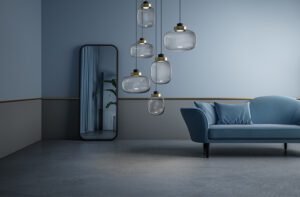Designer Snapshot: Green and Gorgeous
July 4, 2012
By Paula M. Bodah
Trudy Dujardin, a LEED-certified interior designer whose company, Dujardin Design Associates, has offices in Westport, Connecticut, and on Nantucket, became interested in green design in 1987 when she bought a lot on Nantucket Harbor and began living her design mantra: “A healthy home is the ultimate luxury.†On her blog, Holistic House, Trudy notes that she has devoted her career to “finding ways to live lightly and gently upon our treasured earth.†As you’ll see in the examples of her work below, respecting the natural world doesn’t mean sacrificing style or elegance.
In the breakfast area of Trudy’s own home on Nantucket (pictured below), the designer used water-based paints for the interiors, water-based urethane on the floors and citrus-oil-based paint on the trim. “The good life means more when it is achieved without harming the earth,†she says.

Photo by Terry Pommett
A bedroom should be a blissful retreat at day’s end, and according to Trudy, it should also be a pristine one. “While you’re sleeping, your body is working to purge toxins you’ve been exposed to during waking hours,†she says. “Choose an organic mattress and cover it with luxurious organic cotton bedding. Slip into a pair of organic cotton pajamas, and you’ll rest easy, knowing you’ve created your own ‘bell jar’ environment: dust free, clutter free and hypoallergenic.â€

Photo by Erik Rank
It only took a little white magic to create this healthy kitchen on Nantucket. Trudy brightened the kitchen by painting the existing cherry cabinets (saving on waste) with water-based paints. Clean air from ocean breezes is exchanged with inside air every twenty minutes by a state-of-the-art ventilation system that lowers the level of VOCs. The Danby Imperial marble countertops came from Vermont, lessening the distance required for shipping and thereby reducing fossil-fuel use.

Photo by Terry Pommett
This sophisticated, stylish living room was created using custom-made, non-toxic upholstered pieces from J. Robert Scott. Covered in all-natural linen and silk chenille, the cushions are soy-based rather than foam-filled, and provide comfort and beauty. “Cheaply made furniture is destined for the landfill sooner rather than later, so ‘green’ choices are well-made, classic pieces that stand the test of time,†the designer says.

Photo by Durston Saylor
Not only do antiques add grace and style to any room, but they are also the ultimate in green design. “No new resources are used when you add an old armoire or chest; they finished ‘off-gassing’ from stains and finishes long before they arrived in your home, and a finely made, hand-wrought piece will last through generations,†Trudy says. Reclaimed architectural pieces can include mantels, wood floors, doors and cabinetry, saving them all from the landfill.

Photo by Durston Saylor
More of Trudy’s work can be seen in the feature “Singular Sensation†in the 2012 edition of New England Home Cape & Islands.
Share
![NEH-Logo_Black[1] NEH-Logo_Black[1]](https://b2915716.smushcdn.com/2915716/wp-content/uploads/2022/08/NEH-Logo_Black1-300x162.jpg?lossy=1&strip=1&webp=1)







You must be logged in to post a comment.